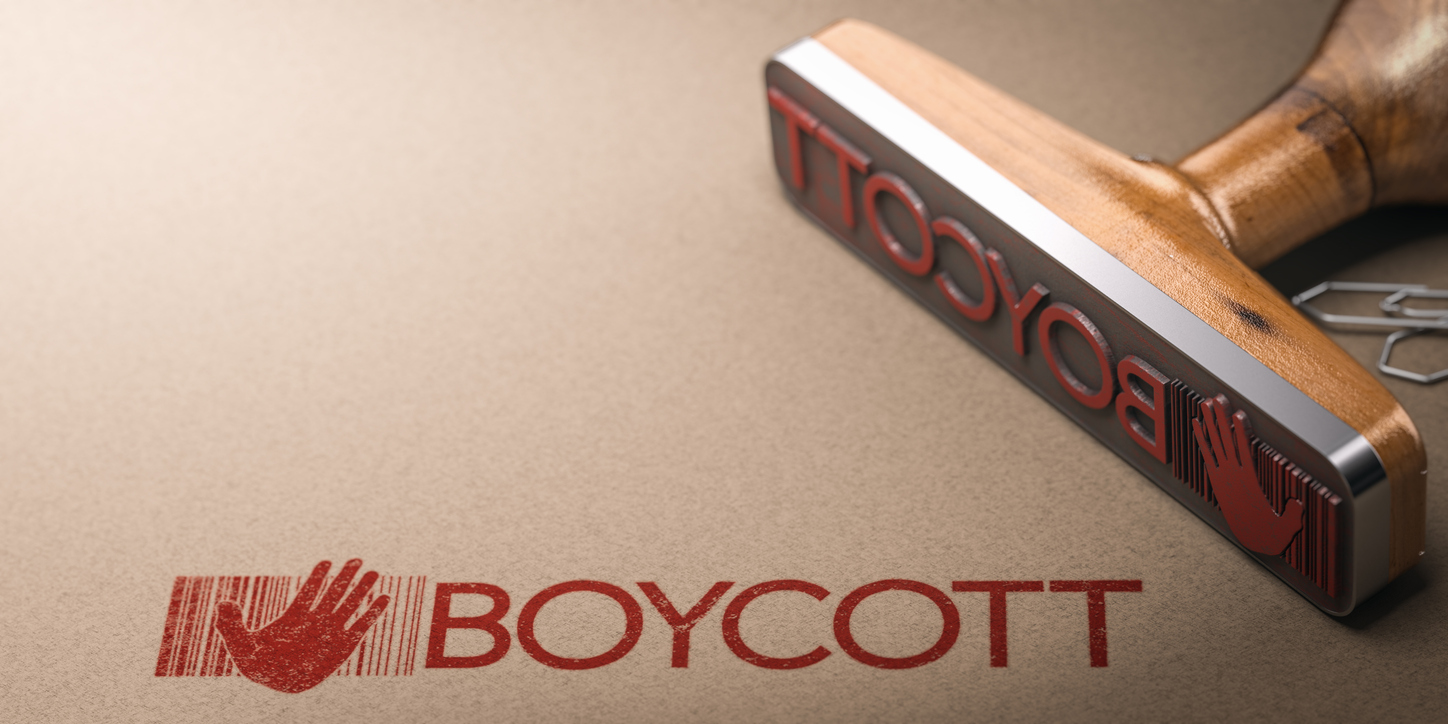Navigating Canadian boycotts of American companies
With political tensions driving consumer backlash, experts urge behind-the-scenes engagement.

In response to tariffs and other American provocations, Canadian consumers have threatened to boycott products from the United States, including items ranging from diapers to citrus fruits.
“What’s interesting is that both the public and the government are driving it,” said Fred Cook, director of the University of Southern California Center for Public Relations. “The backlash targets high-visibility brands with the most awareness and the largest presence in Canada.”
Cook, chairman emeritus at Golin, said that no major brands have made public comments on the matter, except Jack Daniel’s. In that situation, CEO Lawson Whiting of Brown-Forman, the Kentucky-based distiller of Jack Daniel’s whiskey, addressed the removal of American alcohol brands from Canadian shelves, referring to it as a “de facto embargo.”
On the other side of the border, President Donald Trump has made a point of calling out brands and organizations that seem to act against him.
“I think that’s very telling (that no one has spoken up),” Cook said. “It’s such a controversial topic that companies are likely avoiding public remarks – and probably for good reason. That good reason is fear of repercussions from the federal government.”
Cook and other experts, including Professor John Nicoletti and the U.S.-Canada team at FleishmanHillard, argue that staying silent could be the safest path forward for affected brands, especially in politically volatile times.
“I don’t think there’s a lot they can do external, with communicating through the media or through advertising,” Cook said. “I wouldn’t recommend that at the moment.”
While now isn’t the time for most brands to wade into political waters, those with deep Canadian roots have an opportunity to lean on their history in those communities to help offset any anti-American sentiment.
“There are many multinationals that are U.S.-based but feel as much a part of Canadian culture as they are of American culture,” said Nicoletti, a professor of practice at ASU’s Walter Cronkite School of Journalism and Mass Communication. “Now’s a time that they really need to use that in their messaging to show that to consumers in an authentic way.”
Understanding the sensitivities of the Canadian market
The FleishmanHillard team – Charles Muggeridge, senior VP and partner; George Thompson, senior VP and senior partner; and Rachel Catanach, GM, New York – stressed that American companies must be highly attuned to both U.S. and Canadian perspectives.
“The rhetoric around Canada becoming the 51st U.S. state has created a massive surge in Canadian pride and a corresponding ‘Buy Canadian’ movement,” the group said as part of a joint statement to PR Daily. “It is real, it crosses party lines and demographics and it has unified Canadians in ways not seen in decades.”
U.S. brands with a strong footprint in Canada need to show they’re a concrete part of the Canadian economy, local communities, and the country’s way of life. That could mean a McDonald’s franchisee highlighting deep ties to the community or a brand investing locally or sourcing products from prominent Canadian businesses.
Nicoletti recommended that companies continue investing in communities: “Companies with strong CSR programs aligned with both Canadian and American values will navigate these choppy waters better than others.”
FleishmanHillard’s advice is to be “real, transparent and honest” about connections to Canada without overstating them.
Most importantly, the team said, they’re advising U.S. clients to make information about investments in Canada easy to find – whether that’s on social media or through a banner on the company website. They noted that Canadians are doing their own research to make informed decisions about which brands and companies they want to support.
“Canadians are wise to ‘maple-washing,’” the FleishmanHillard team said, referring to superficial attempts to appear more Canadian. “But they’ll appreciate a U.S. company’s longstanding legacy of involvement in Canada.”
Playing the long game
Every U.S. brand will need to assess how far to lean into messaging in Canada—and that decision will likely come down to how much business is at stake.
“If brands have a big enough presence in Canada, then any messaging they put out will make sense,” said Nicoletti. “But if they don’t, any message they try to craft will ultimately come across as inauthentic and could do more harm than good. People are going to ask, ‘Why are you even in this discussion?’”
That balance is especially delicate given the political dynamics at play. Nicoletti emphasized the risk of alienating the White House if messaging goes too far. “In the U.S., it’s about brands staying neutral, consistent and rising above politics,” he said.
As such, brands must demonstrate a commitment to Canadian consumers without jeopardizing relationships with stakeholders in the U.S., including the current administration. That means working closely with investor relations, public affairs, government relations, communications, brand marketing and other external engagement teams to make sure everyone is on the same page.
“Boycotts aren’t short-term events. Companies must think of crisis management as an ongoing process, ensuring they’re agile enough to adapt to changes in the situation,” he said.
For now, Cook continues to advocate a cautious, wait-and-see approach to broader communications strategy.
“Many are keeping their powder dry and waiting for calmer days ahead,” Cook said. But he said those who choose to speak out, have an opportunity to build stronger relationships with both customers and shareholders if they lead with transparency and empathy.
“The biggest mistake a brand can make right now is trying to be something it’s not,” Cook said.
Casey Weldon is a reporter for PR Daily. Follow him on LinkedIn.







